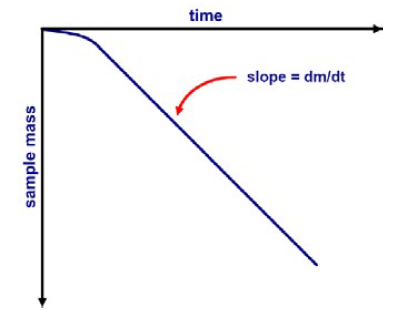Precise and elaborate vapor pressure measurements of liquids, solids, and oils are necessary for product development and formulation in various industries, from agriculture to pharmaceuticals.

Image Credit: Surface Measurement Systems Ltd
Applying the Knudsen Effusion Method, an advanced dynamic gravimetric method, the Vapor Pressure Analyzer from Surface Measurement Systems Ltd. becomes a unique tool for laboratories seeking to quantify the vapor pressure of liquids, solids, and oils.
Why Does Vapor Pressure Matter?
Vapor pressure is a significant material physical property that characterizes the amount of vapor phase material that is present in equilibrium with the original material. All materials enter the vapor phase through evaporation (liquid–gas) or sublimation (solid–gas).
The vapor pressure of solid and liquid compounds can be useful in determining the thermodynamic stability and shelf life of a variety of products, especially those within the pharmaceutical industry.
The precise quantification of vapor pressure is vital when it comes to determining the safe use and handling of solid compounds. Using the Knudsen Effusion Method, the Vapor Pressure Analyzer (VPA) accurately determines the vapor pressure of materials.
The Knudsen Effusion Method
The Knudsen Effusion Method is a dynamic gravimetric method based on the rate of escape of vapor molecules via an orifice of well-known dimensions in a Knudsen cell into a vacuum at a familiar temperature.
The rate of mass loss via the orifice is quantified by the Surface Measurement Systems’ UltraBalance inside the VPA system. The material’s vapor pressure at thermodynamic equilibrium is a fundamental property of the material and is only a function of temperature. Sample masses between 1 and 100 mg can be studied in the temperature range from 10 °C to 400 °C.
In a typical experiment, the sample is placed in a titanium Knudsen cell which contains an orifice of known area and is heated to experimental temperatures.
The rate of mass loss is related to vapor pressure of condensed phase, P, by the Knudsen equation (Equation 1), where dm/dt is the rate of mass loss inside the Knudsen cell with time, M is the sample molar mass (mol/g), R is the universal gas constant, A is the area and T is the temperature.
 |
(1) |
Dm/dt represents the slope value from a least square regression fit to the experimental mass data over a certain period of time. The dm/dt is utilized to evaluate the vapor pressure employing Equation 1.
A range of quantified vapor pressures at varying temperatures are utilized to identify the constants A and B in the Clausius–Clapeyron equation (Equation 2) and thus evaluate ΔH, enthalpy of vaporization, or heat of sublimation.
 |
(2) |

Figure 1. Mass versus time data from Knudesn Cell. Image Credit: Surface Measurement Systems Ltd
Knudsen Cell

Image Credit: Surface Measurement Systems Ltd
The Capabilities of the VPA
- Measure rate of mass loss (change in mass) values as little as dm/dt = 1x10-4 mg/minute
- Can perform measurements on samples with extremely low vapor pressures
- Employs the Knudsen Effusion Method to accurately and precisely determine the Vapor Pressure of solids, liquids, and oils
- Can perform experiments using a minute amount of sample, ranging in size from 5-25 mg
- Can achieve an ultimate vacuum of 1x10-6 Torr
- Has a variety of Knudsen cell orifice sizes available (100-300 micronVs in diameter) – good for experiment optimization
- Custom-made control and analysis software fully automates experiments, allows incredible control over experimental method, and conducts full Knudsen vapor pressure analysis and reporting.
- Temperature range of 10 °C to 400 °C with high-temperature pre-heater accessory